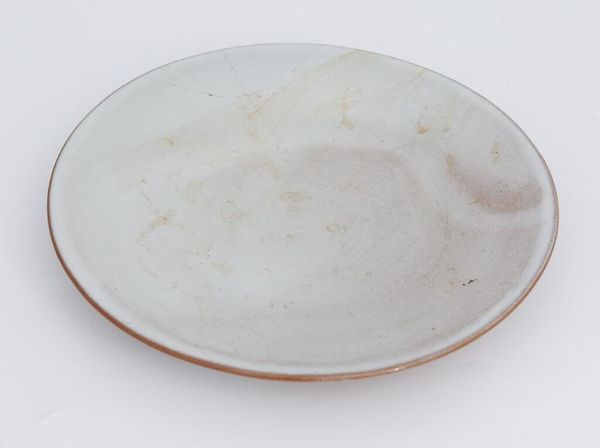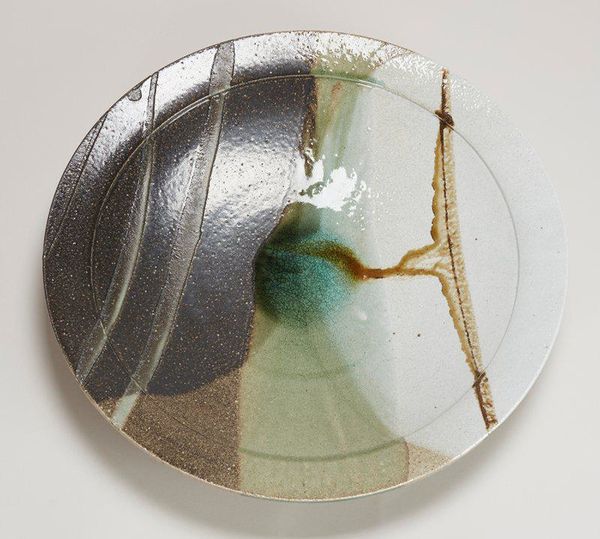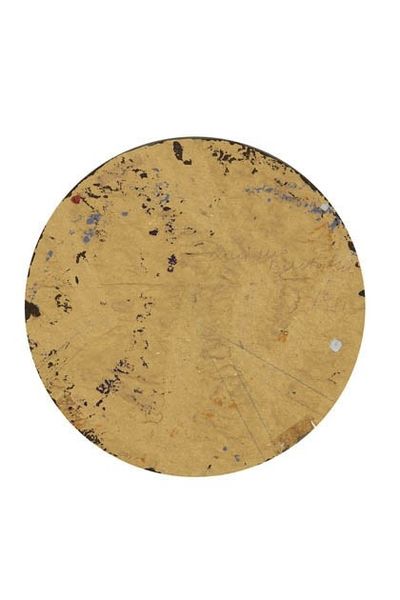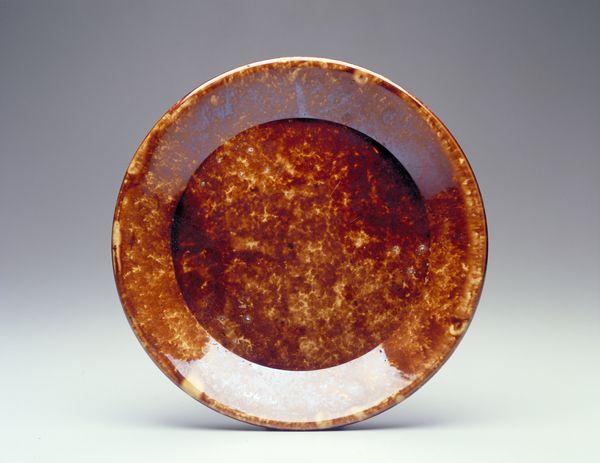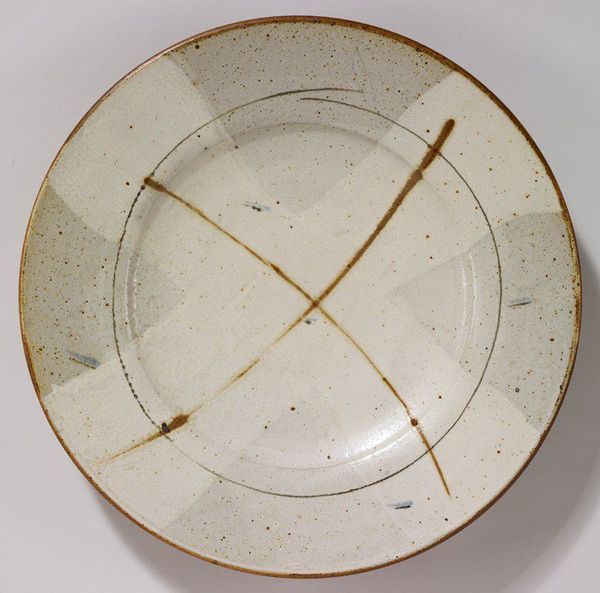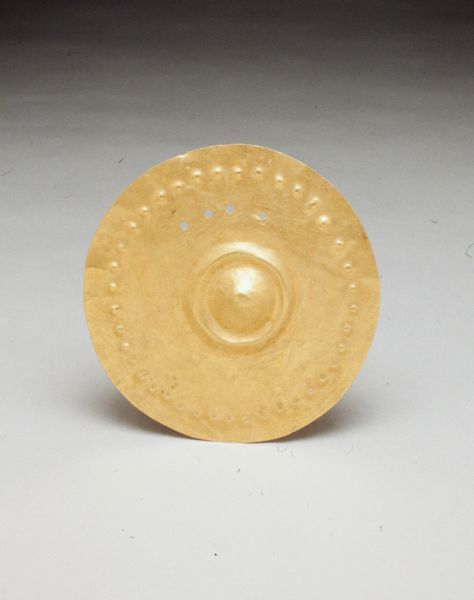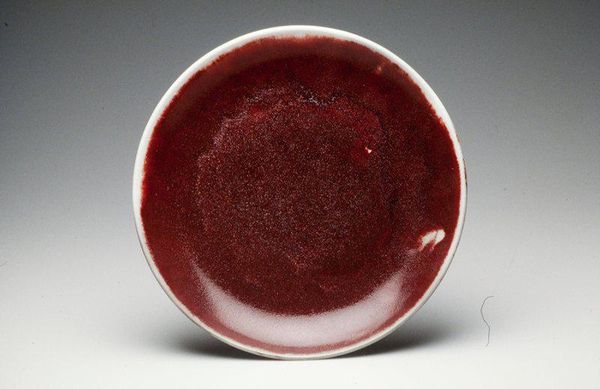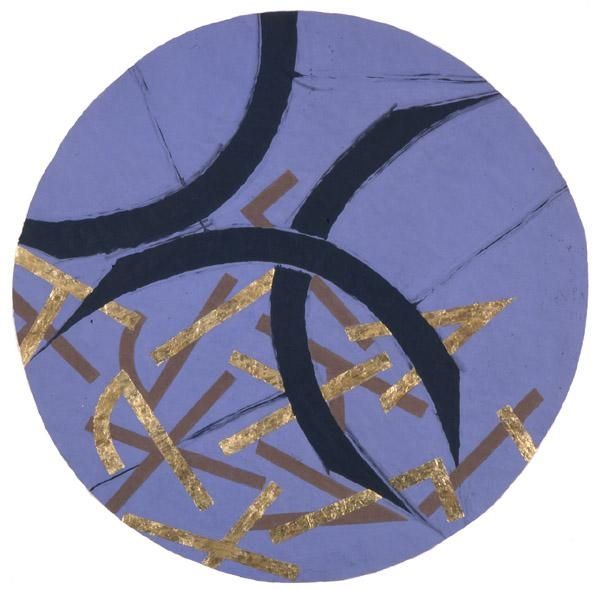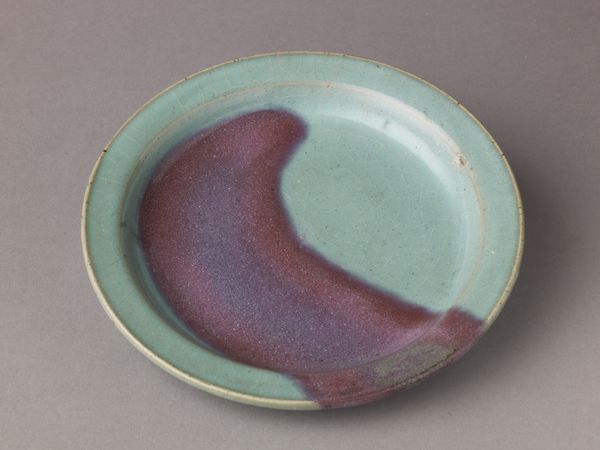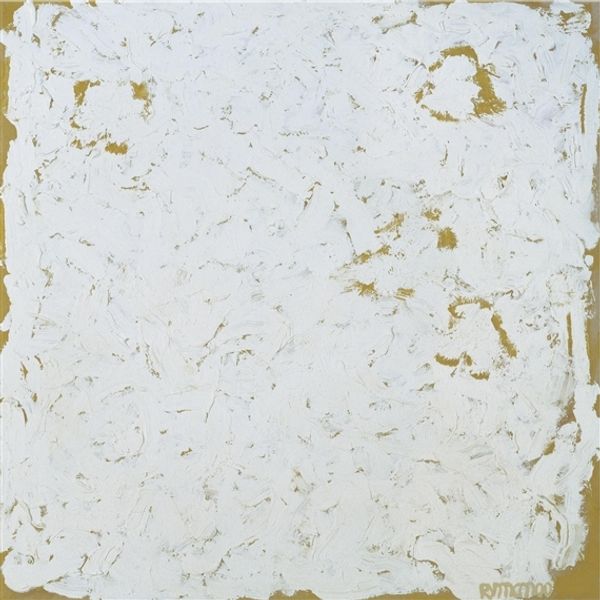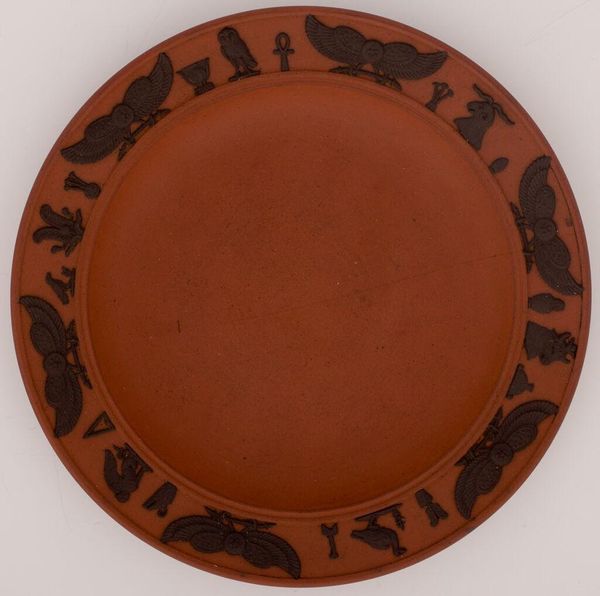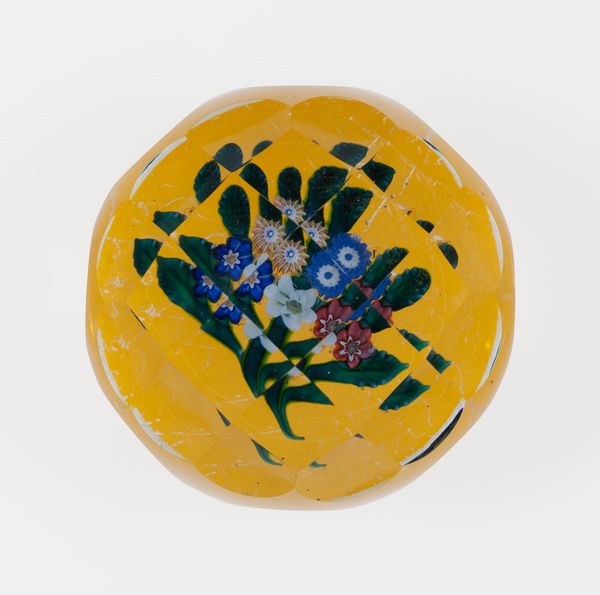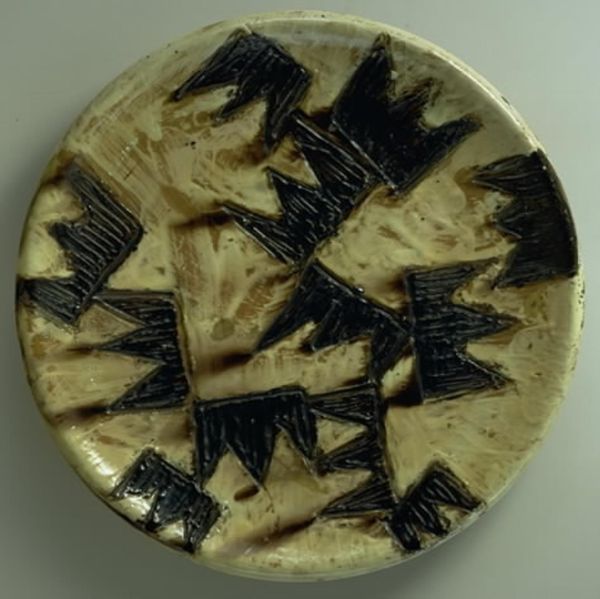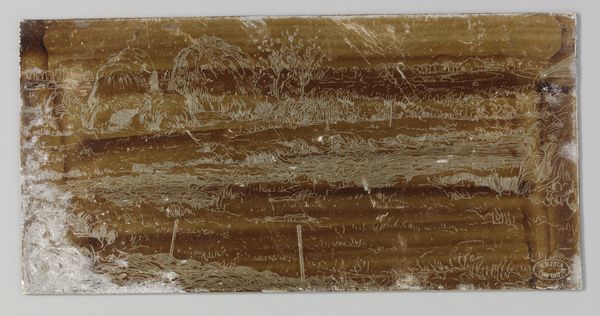
ceramic, earthenware
#
ceramic
#
abstract
#
earthenware
#
ceramic
#
united-states
#
line
#
earthenware
Dimensions: 1 x 12 x 12 in. (2.54 x 30.48 x 30.48 cm)
Copyright: No Known Copyright
Curator: Welcome. We’re standing before Connee Mayeron’s "Plate," crafted in 1998 and residing here at the Minneapolis Institute of Art. It's earthenware with a ceramic glaze, and it offers quite a striking impression. Editor: It does. Immediately, I'm drawn to the stark contrast, this kind of controlled chaos of dark lines slashing across the off-white surface. It feels incredibly dynamic for a simple plate. Curator: Agreed. Structurally, the plate operates within established ceramic traditions, but it uses that form to challenge conventional expectations of what belongs on such a surface. These aren't decorative flourishes, but assertive, almost aggressive marks. Editor: And that aggression, that visual disruption, sits rather intriguingly in relation to its intended function. A plate, after all, is made for domestic use. Was it shown in an exhibition, or do we know if it was ever intended for daily domestic life? Curator: Good question! As far as I'm aware, we have no record to its exhibition history and everyday life. We could interpret those sweeping marks as a challenge to bourgeois notions of functionality and artistic expression during a time when the decorative arts were being seriously reconsidered. The plate enters the dialogue between function and form and becomes its own cultural symbol. Editor: Precisely! Think about how earthenware evolved. Mayeron seems to almost satirize traditional glazing techniques. She doesn't seek a uniform sheen but celebrates, even amplifies, the imperfections. Are we meant to view her medium as merely ceramic when it stands apart as a social statement? Curator: The intentionality of the marks interests me most. It invites readings tied to spontaneity, almost an abstract expressionist action painting captured within the constraints of the circular plane. But does that really give insight into its social positioning at the time? Editor: Possibly, but perhaps the performative act is subservient to a socio-political inquiry. Do the aesthetic strategies work toward communicating this meaning? After all, every creative choice impacts meaning, doesn’t it? Curator: Point taken. What's fascinating is how its physicality—the tangible texture of the ceramic, the play of light on its surface—counterbalances this intellectual exercise, this debate between historical placement and artistry. Editor: I feel the materiality almost forces us to slow down and reconsider what we define as decorative art objects. These are so often regulated or commodified when we do not even consider their role. I will be turning that thought over today, definitely.
Comments
No comments
Be the first to comment and join the conversation on the ultimate creative platform.
